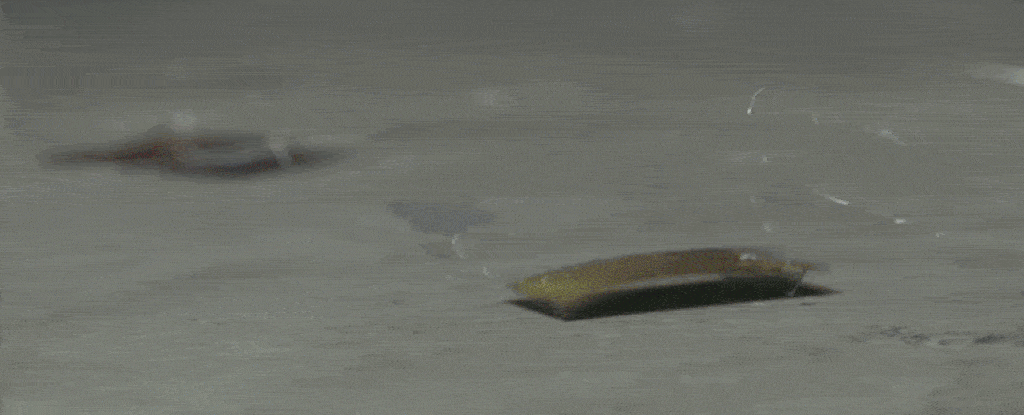Products You May Like
Some of the best robots are inspired by nature. Now, engineers have developed a small, scurrying bot based on the humble cockroach – with almost as much speed and squashability as its biological equivalent.
About the size of a postage stamp, the as-yet-unnamed soft robot is able to move at a speed of 20 body lengths per second, and take the stress of up to a million times its own weight.
Tipping the scales at less than a tenth of a gram, the bot can withstand being stood on by a human foot – a weight that’s around the equivalent of 60 kilograms or 132 pounds. It simply picks itself up and carries on.
“Most of the robots at this particular small scale are very fragile,” says mechanical engineer Liwei Lin, from the University of California, Berkeley. “If you step on them, you pretty much destroy the robot.”
“We found that if we put weight on our robot, it still more or less functions.”
Part of the robot’s robustness is down to its simple design. It’s made from a thin sheet of polyvinylidene difluoride (PVDF), a piezoelectric material that expands and contracts with the application of a small alternating current.
That expansion and contraction gives the roach-bot its way of moving: by adding a front leg and an elastic polymer layer, the scientists got the sheet to bend in a way that propels it forward.
The team experimented with several lengths of robot (from 10 to 30 mm) and varied the frequency and voltage of the electric current to alter the running speed of their designs. At its fastest, a 10 mm robot managed to scuttle along at a whopping 20 centimetres per second when 200 V were applied at 850 Hz.
As you can see from the video above, the scurrying robot is able to climb up gentle inclines, speed through small tubes, and even carry loads up to six times its own weight – as demonstrated by fixing a peanut to the top.
Right now the bot needs to be tethered to its electricity source, but a future version could be powered by a tiny battery.
While it’s fun to watch clever designs like this do their thing, designs like these can have valuable uses. One of the ways tiny bots can be helpful is by investigating disaster sites that might be dangerous and unstable.
“For example, if an earthquake happens, it’s very hard for the big machines, or the big dogs, to find life underneath debris, so that’s why we need a small-sized robot that is agile and robust,” says mechanical engineer Yichuan Wu, from the University of Electronic Science and Technology of China.
To this end, the team is looking into ways of adding a gas sensor to the original design – that would enable the bot to sneak into very tight spaces and check for any gas leaks that present a potential threat to life.
That’s just one of the improvements the engineers are looking to make to their soft robot. They’d also like to develop a way of getting it to automatically avoid obstacles as it explores the world around it.
In recent years we’ve seen the boundary between biology and robotics become even more blurred, with tiny machines now capable of journeying through a living organism. The capabilities of this particular design are just beginning to be explored.
“We hope the proposed insect-scale robot paves a way to pursue fast and robust robots for practical applications,” conclude the researchers in their published paper.
The research has been published in Science Robotics.
